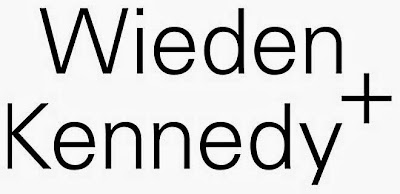Although I am still a junior, I think it's a good idea to start looking at internship opportunities offered by various advertising agencies. I believe an internship is a good way to learn about an agency's work environment, get some experience in the industry, and radically increase your chances for future employment. However, I think that the choice of the internship should not be random and spontaneous. It's important to research the agency beforehand to see whether its business philosophy matches your own worldview and to get a sense of the kinds of industries and clients it works with, to understand how you can fit in and use your skills to the maximum.
After researching multiple agencies' programs, I picked the ones I would apply for.
1. Crispin Porter + Bogusky
What: advertising agency
Founded: Miami, Florida, in 1988
Company size: 1001-5000 employees
Offices: London, UK; Göteborg, Sweden; Miami, FL; Boulder, CO; and Santa Monica, CA.
Clients: Windows, Best Buy, Xbox One, Bing, Applebee's, Diesel, Old Navy, Coca-Cola Zero, Burger King, Mini, Volkswagen, Ikea, etc.
Internships: offered three times a year - Winter (Jan-April), Summer (May-August), and Fall (Sept-Dec)
Annual interns: 60
Average intern salary: $7.47/hour
Why I like it: CP+B is one of the most awarded agencies in the world. That says a lot. A big plus is that it offers a wide range of internships - creative, production, media, design, strategy, planning, etc. Moreover, browsing through the
winter internship positions, I found the one that sums up my dream job in four words. It's called Cultural and Business Insights (Strategic Planner). I can't wait to apply as soon as I can!
Former interns' reviews: here
What: creative and technology agency
Founded: New York City, NY, in 2002
Company size: 501-1000 employees
Offices: New York, Atlanta, Los Angeles, San Francisco, London, and Singapore.
Clients: Coca Cola, Sony, Bing, Visa, Microsoft, Puma, etc.
Internships: mostly in the summer, but some positions are offered throughout the year as well
Annual interns: 15
Average intern salary: $10/hour or unpaid
Why I like it: First of all, MRY is very young, modern, and creative. Secondly, the
Summer Internship Program includes a series of learning tasks and formal development assessments, a
summer-long team project, social events,
and more. In 2011, both Crain's New York Business and Advertising Age named MRY as # 2 of their ''Best Places to Work.'' The next year, Business Insider named MRY's internship program # 1 on its list of the 20 best advertising internships in the United States, as voted by interns.
Former interns' reviews: here
3. Mullen
Founded: Boston, Massachusetts, in 1970
Company size: 900 employees
Offices: Boston, MA, Los Angeles, San Francisco, Detroit, Pittsburgh, and Winston-Salem, NC.
Clients: Acura, JetBlue, Google, U.S. Cellular, Zappos, adidas, True Religion,
VH1, American Greetings, FAGE, LivingSocial, Match.com, Timberland,
MassMutual, National Geographic Channel, Olympus, etc.
Internships: summer
Annual interns: 30
Average intern salary: $9.96/hour
Why I like it: Mullen
pays its interns, puts them on real projects, and allows them to present to higher management, hence its high internship
rating. Besides, Mullen is a four-time Adweek's "Agency of the Year" winner, and I love the interactive mustache on their website.
Former interns' reviews: here
4. Ogilvy & Mather
What: international advertising, marketing, and public relations agency
Founded: New York City, NY, in 1948
Company size: 10,001+ employees
Clients: Nestle, Yahoo, Louis Vuitton, IBM, Cisco, Greenpeace, Dove, etc.
Internships: interactive, art direction,
copywriting, production, brand management, branding, planning, media, and
others.
Annual interns: 40
Average intern salary: $11.00/hour
Why I like it: It's huge. It's international. Also, Ogilvy & Mather's 12-month
Associates Program gives its participants the opportunity
to learn from some of the most talented and experienced people in
advertising and be placed within the company at the end of the program.
Former interns' reviews: here
5. Bartle Bogle Hegarty (BBH)
What: international creative advertising agency
Founded: London in 1982
Company size: 1000+ employees worldwide
Offices: London, New York, Los Angeles, Singapore, São Paulo, Shanghai, and Mumbai
Clients: Axe, Alpenlibe, Audi, PlayStation, Levi Straus, British Airways, Johnnie Walker, Mentos, The Guardian
Annual interns: varies
Average intern salary: $8.13/hour
Why I like it: BBH is a huge agency that operates worldwide. A big plus is that interns are paid $350 per week (New York).
Former interns' reviews: here
What: full service, modern communications company
Founded: Los Angeles in 2004
Company size: 51-200 employees
Offices: Los Angeles and Amsterdam
Clients: Activision, Anheuser-Busch, Carl’s Jr., ESPN, Google, Samsung, Smirnoff, Sonos, and Target
Internships: 72U, a 12-week program
Annual interns: 10+
Average intern salary: $8.00/hour
Why I like it: 72andSunny is a relatively young company with big potential.
What lures me in is its super creative and dynamic atmosphere.
Check it out
here.
Former interns' reviews: here
7. Weiden+Kennedy
What: full-service, creatively driven advertising agency
Founded: Portland, Oregon, in 1982
Company size: 1001-5000 employees
Offices: Portland, New York, Amsterdam, Tokyo, London, Delhi, Shanghai, and Sao Paulo.
Clients: Chrysler, Coca-Cola, Converse, Facebook, Levi's, Nike, Old Spice, Sony, P&G, etc.
Internships: have to contact the
HR team or apply for
W+K 12, an internship program
Annual interns: 20 (Portland)
Average intern salary: $10.36/hour
Former interns' reviews: here











































